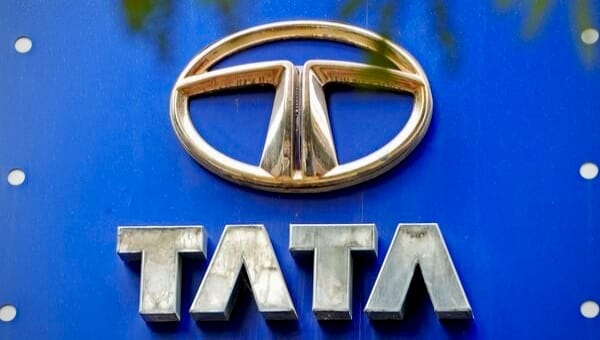
Maersk, the Danish shipping behemoth, unveiled a $5 billion investment in India’s national rail network on November 15, 2023, intensifying the global race toward greener, faster, and more cost-effective supply chains amid the country’s push to emerge as a world-class manufacturing and logistics hub.
Seasoned market observers, recalling the 1991 liberalization that fueled India’s trade dynamism, see Maersk’s long-horizon bet as affirmation of the country’s emergence as a pivotal node in global trade realignment. As worldwide supply chains pivot away from over-concentration in China, India’s Gati Shakti National Master Plan and new logistics policies gain credibility from such high-stakes, foreign direct investment.
Maersk’s $5 billion pledge, to be disbursed through 2030, targets a 60% reduction in carbon emissions and 30% shorter overall transit times by slashing India’s notoriously high logistics costs—currently estimated at 13–14% of GDP, compared to 8–9% typical of developed markets—according to the World Bank and India’s Ministry of Commerce. By addressing this competitiveness gap, the initiative aligns directly with the Narendra Modi administration’s ambition to reach a $5 trillion economy by 2027 and to accelerate “Make in India,” a flagship program for boosting domestic industry.
Charles van der Steeg, Maersk’s Regional Managing Director for Asia Pacific, emphasized in a November statement, “Our $5 billion commitment underscores our confidence in India’s long-term economic trajectory and its critical role in fostering resilient global supply chains.” He added that investments would be staged in phases, targeting both capacity creation and technology upgrades to transform current freight movements.
The project will prioritize construction and modernization of over 1,500 kilometers of dedicated freight corridors with direct connectivity to coastal ports, major inland cities, and emerging industrial parks. Executives familiar with freight strategy note that such dedicated infrastructure, integrated with automated container stations and digital cargo tracking, can drive 40% greater intermodal handling throughput by 2030—a figure corroborated by recent studies from the Confederation of Indian Industry (CII).
Maersk executives project their investment will catalyze over 10,000 direct and indirect jobs, primarily in North and Western India, where manufacturing clusters are intensifying production. “Each step toward multi-modal logistics unlocks more value for Indian exporters and importers, dramatically cutting dwell time at ports and enabling just-in-time production,” said Rajeev Chawla, chairman of the Federation of Indian Export Organisations (FIEO), in late December.
Deloitte India’s senior logistics advisor, Suniti Varma, noted that a 60% emissions cut represents “a watershed in sustainable transport for a country whose logistics sector is still largely road-dependent.” If Maersk’s projections hold, 2.5 million metric tons of CO2 emissions could be eliminated annually through mode shifts to electric and low-carbon rail—approaching the entire annual emissions of a sizeable Indian city.
Maersk’s model also leverages best practices from Europe and East Asia, veterans of global ports and rail upgrades recall. The company is set to deploy predictive analytics, smart yard management, and a seamless digital interface so shippers can track and optimize cargo routing in real time—modernizations consistent with the logistics digitization wave that accelerated after the 2008 global financial crisis.
India’s Commerce Minister Piyush Goyal, in remarks to parliament on December 1, stated, “Maersk’s multi-billion dollar investment directly validates our new regulatory reforms, rationalized tariffs, and single-window clearance systems.” Goyal projected that the upgraded network will slash cross-country rail transit for time-sensitive goods from 8 to under 5 days, a transformation with far-reaching export ramifications for sectors from electronics to apparel to pharmaceuticals.
The commitment is not without challenges. Seasoned infrastructure analysts point out that land acquisition, permitting, and regulatory processes remain formidable, despite recent streamlining. However, Maersk’s engagement comes as the government accelerates the Gati Shakti National Master Plan, a $100 billion, multi-agency infrastructure blueprint which brings road, rail, air, port, and inland container assets onto a single digital planning grid. Initiatives such as these echo state-led transformations last seen during India’s Golden Quadrilateral highway build-out in the early 2000s—a period that unlocked double-digit growth and export surges.
The value at stake is substantial. India’s logistics market currently exceeds $200 billion annually, yet fragmentation and inefficiency have long hampered trade competitiveness. Veteran portfolio managers who navigated the 2013 rupee crisis recognize that without robust transportation infrastructure reform, India risks ceding its window of export opportunity to Southeast Asian peers.
To address workforce skill gaps, Maersk will partner with Indian Railways and the National Skill Development Corporation, funding technical training and certification for thousands of employees. Advocacy groups representing India’s trucking sector have raised concerns about modal shift, but Maersk’s executives assert that road-haulage partners will benefit from expanded first- and last-mile business even as rail absorbs more long-haul freight.
Looking ahead, infrastructure experts believe Maersk’s scale and execution capabilities set a benchmark, triggering likely competitive responses from DP World, Adani Ports, and state-linked Chinese logistics majors with India ambitions. “The pattern mirrors the transformative inflows of port investments seen in East Asia a generation ago, when foreign operators required a long gestation period but ultimately drove up national trade capacity by orders of magnitude,” said Rakesh Mohan, former deputy governor of the Reserve Bank of India and infrastructure specialist.
As India intensifies its courtship of foreign capital for its logistics sector, industry veterans will watch for timely project execution, regulatory clarity, and continued public-private coordination to convert this marquee investment into a multiplier for economic modernization and global integration.







